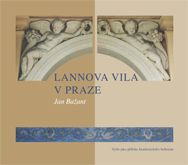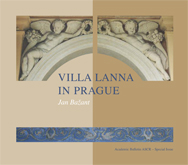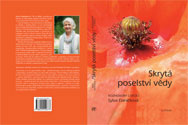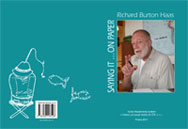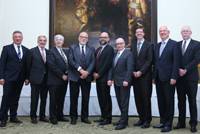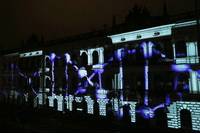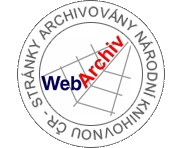A Czech delegation of three women scientists from the Academy of Sciences of the Czech Republic, consisting of Drs. Raji Heyrovska of the Institute of Biophysics, AS CR, Jarmila Kodymova and Vera Hamplova, both of the Institute of Physics AS CR, recently returned from the 3rd International Conference on Women in Physics (ICWIP 2008) in Seoul, South Korea. The previous ICWIP conferences were held in Paris (AB 6/2002), and in Rio de Janeiro (AB 9/2005).
There were over 330 scientists from nearly 70 countries from all corners of the world, who registered for the conference, of which 283 from 57 countries attended. Delegates came from Africa, Asia, Europe, Latin America, North America, and other nations.
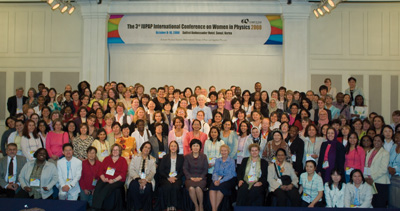
FOTO: Archiv autorky
The meeting, held from 7 to 10 October was dedicated to celebrating the achievements of women in physics throughout the world, networking toward new international collaborations, gaining skills for career success and aiding the formation of active regional working groups to advance women in physics. Each country presented information about its statistics and its activities to increase women's participation. The highlights included six plenary talks by prominent women physicists. There were 65 country posters dealing with women in physics and 128 scientific research posters. The Czech women had one poster in each category. Five workshops took place in parallel sessions where women discussed strategies to improve the state of women in physics: A) Personal professional development, B) Attracting girls to physics, C) Site visits assessing and improving the climate for women, D) Successful proposals and project leadership and fund raising and E) Organizing WIP working groups. A bound volume of the meeting abstracts was distributed to the participants and all the papers and reports of the workshops are scheduled appear in the AIP Proceedings, as in the 1st and 2nd IUPAP ICWIP conferences which were published in AIP Proceedings: 628 (2002) and 795 (2005).
The conference gave the opportunity to form networks with potential colleagues, to collaborate with experts in their fields of interest to solve problems that can help society in specific ways, to learn from the experiences of all the countries at the conference, and to see so many bright young physicists – both women and men – who are passionate about their research and committed to attracting girls to physics and advancing women.
This conference also encouraged participation by male colleagues so that they could learn a lot about the problems of women in physics and to think of helping make physics friendlier for women, who are needed for their ideas in the field, in the country, and for the world to thrive better.
Worldwide, fewer than 15 % of physicists are women. In this conference, more than 80 % of the attendees were women. It was clear that the scarcity of women in physics, especially in leadership positions, is a problem for many countries. They cannot benefit fully from women's ideas and approaches to improve their economic competitive-ness or solve difficult problems, such as energy, health, and global sustainability. The proportion of physicists who are women remains well below 20 % in nearly all countries – too few to have maximum benefit for society.
Women, men, institutions, and governments need to work together to encourage, educate, recruit, retain, advance, and promote more girls and women in physics and other science and technology professions. To that end, the conference participants unanimously approved a resolution to be submitted to the 26th General Assembly International Union of Pure and Applied Physics in Tsukuba Japan on 15 October 2008.
“Since the 1st IUPAP Conference (Paris, 2002) and the 2nd Conference (Rio de Janeiro, 2005), progress has continued in most countries and world regions to attract girls to physics and advance women into leadership roles, and many working groups have formed. The 3rd Conference (Seoul, 2008), with 283 attendees from 57 countries, was dedicated to celebrating the physics achievements of women throughout the world, networking toward new inter-national collaborations, building each participant’s capacity for career success and aiding the formation of active regional working groups to advance women in physics. Despite the progress, women remain a small minority of the physics community in most countries.
Only when women of all races and nationalities are included within the physics community will the global society benefit fully from the contributions physics offers to economic development and to the solution of major challenges, such as energy, health, climate change, water, education and sustainability that transcend national boundaries. To accelerate progress, both men and women in physics must champion this agenda. The representatives assembled in Seoul unanimously recommend the following actions to the IUPAP 26th General Assembly in Tsukuba, Japan:
- Promote through the IUPAP Liaison Committees and physical societies the formations of additional regional or national working groups for women in physics. These working groups would assist worldwide in the efforts to increase the participation of women, while being a resource to attract, retain and advance women in physics.
- Publicize site visits as an effective tool for impro-ving the “climate” of physics workplaces and encourage their implementation to help the workplaces become more supportive of both women and men. For a site visit, an institution or physics department invites a team of physicists to assess the work environment for women and to give advice for improvements in gender equity.
- Actively encourage organizers of IUPAP-sponsored conferences to provide, associated with the conference programme (a) professional development workshops for attendees and (b) outreach activities aimed at the public and to engage both girls and boys from an early age in the excitement of physics.
- Charge the IUPAP Working Group on Women in Physics (a) to oversee the administration of a global survey of physicists in 2009, (b) to continue to assess the progress of women in physics, (c) to make useful resources available globally through the internet, (d) to organize the 4th International Conference on Women in Physics in 2011 and (e) to report at the 27th IUPAP General Assembly in 2011.
- Urge IUPAP Liaison Committees and physical societies to take the leadership in their countries to encourage broad participation of their members in the global survey of physicists.”
Dr. Youngah Park, a physicist from the Myongji University, Korea, who chaired the conference local organizing committee, was recently elected to the Korean National Assembly from her district. She told the assembled participants, “I believe the positive effect of ICWIP2008 will go beyond the physics community and will have a strong effect on women leaders in all fields of science and technology.”
Dr. Barbara Sandow, a physicist from the Freie University in Berlin and the chair of the IUPAP Working Group on women in Physics, expressed the hope that the conference will inspire the participants to take further measures to improve the situation of women in their respective countries.
To summarize, the welcoming remarks by the Presi-dent of the Korean Physical Society, Dr. Zheong G. Khim, seems appropriate: “It is widely recognized that to make a harmonious progress on human civilization in the 21st century, it is desirable to promote the roles of women in society, first by overcoming culturally prejudiced barrier imposed on women scientists and secondly, by providing more opportunity to women scientists. Equal participation of men and women physicists will eventually lead us to a better world for all of us to live in.”
The Czech delegation is grateful to the organizers of the ICWIP 2008 and to the AS CR for their kind financial support that enabled us to participate in the conference. More information and group photos will be posted at http://www.ICWIP2008.org.
Raji Heyrovska (team leader),
Institute of Biophysics, AS CR,
Jarmila Kodymova,
Vera Hamplova,
Institute of Physics, AS CR



 English
English




